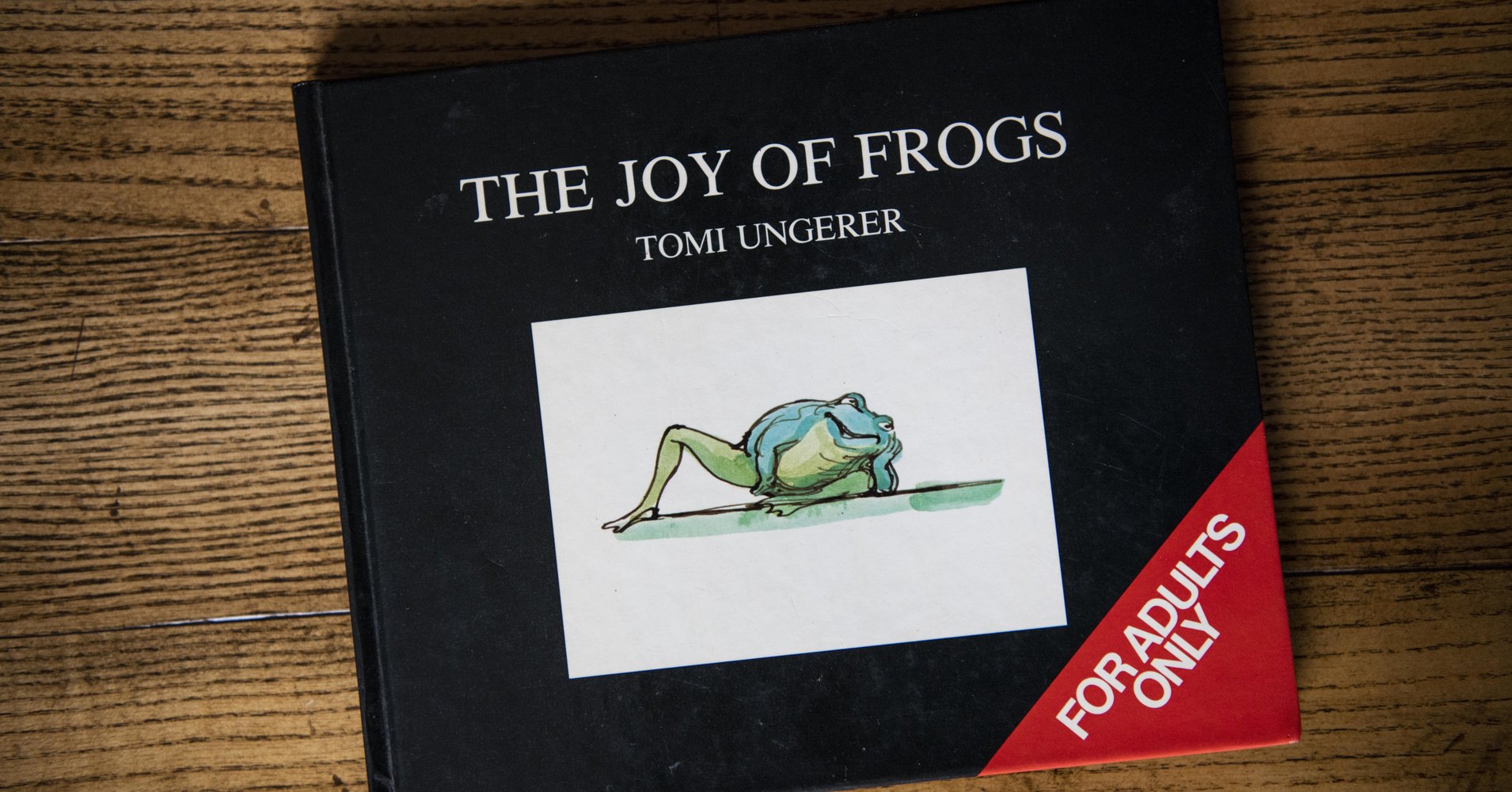[ad_1]
For years, the late Tomi Ungerer created children’s books and erotica for a fully bifurcated readership. When his worlds collided, children’s librarians were pissed.
At an American Library Association conference in 1969, a mob of angry librarians pressured Ungerer on his audacity to create both Hans Christian Andersen Medal-winning kids’ literature and absolutely NSFW smut for adults. Feeling under attack, he lashed out, reportedly yelling back at his critics, “If people didn’t fuck, you wouldn’t have any children, and without children, you would be out of work.”
“And that went, of course, very badly,” Ungerer later recounted to The New Yorker. “Especially with the word F-U-C-K.”
Ungerer ― who drew everything from children’s books to political posters protesting fascism to erotica ― died on Feb. 8, 2019, at 87 years old. Born in France, Ungerer survived Nazi occupation, relocated to New York City in 1956 and became delightfully famous thereafter. He lived with novelist Philip Roth, illustrated a poster for “Dr. Strangelove” and became best friends with Maurice Sendak.
He published 140 books in three languages throughout his lifetime, his most celebrated achievements being dark and droll children’s books like The Three Robbers and Moon Man, which swapped out vanilla protagonists for misunderstood outsiders and lovable weirdos. Yet no Ungerer creation captures the artist’s singular spirit ― part rebellion, part eternal innocence ― like the strange and swampy erotic novella he created, The Joy of Frogs.
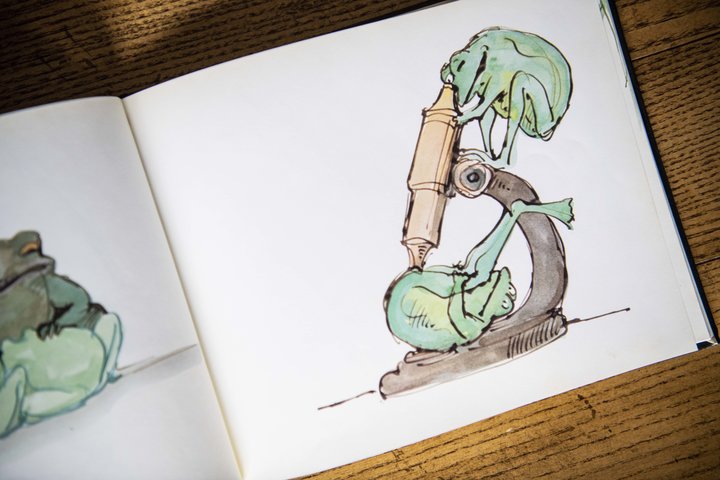
Published in 1982, the book riffs off The Joy of Sex, substituting humans for ultra horny amphibians. Why frogs? “I always thought that frogs have beautiful legs,” illustrator Tomi Ungerer told me in 2015. Having never paid much attention to amphibious gams myself, I Google image-searched the term after we spoke. The results turned up resoundingly flayed and fried, but undeniably shapely nonetheless.
“When I was in America in the ’60s there were all those books about sex, about how to do it. So I made fun of it,” Ungerer said. “I put them in every possible situation and position, believe me!”
Ungerer’s strange book, an amphibious answer to the Kama Sutra, looks like what Frog and Toad might keep hidden in their nightstand for a particularly wild night. The compact volume looks innocent enough, with a spry frog perched pensively on the cover, froggy cheek resting upon froggy palm. Only later does one’s eye travel to said frog’s other hand, nestled between its legs, suggesting the more explicit content of daydreams in motion.
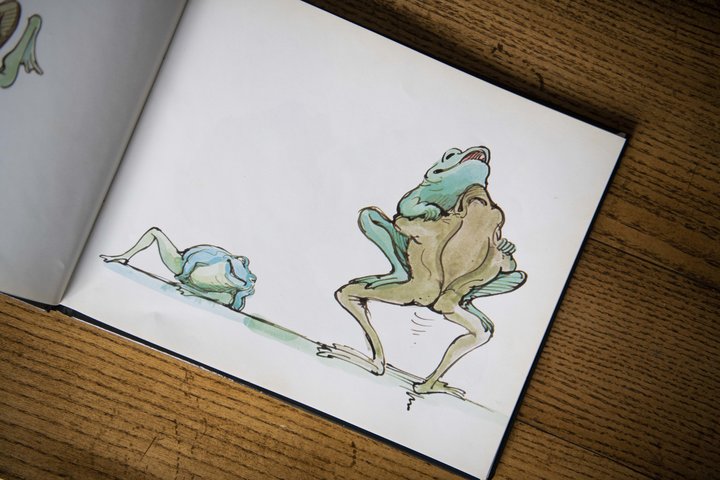
Expressed in the fanciful language of children’s stories, The Joy of Frogs is designed to stretch and delight even the stodgiest adults’ erotic imaginations. Truly, one should not open Ungerer’s unsung masterpiece unless prepared to come face to ass with frogs fornicating in a variety of permutations and combinations.
Inside, tadpoles munch on a frog’s interior testicles and spermatic canal (male frogs don’t have a penis). Three frogs form a pleasure chain while riding atop a beach ball. One frog pumps air into another’s bottom, sending the lucky croaker soaring into the wind. Cattails become penetrating toys, leapfrog becomes a very different pastime, a champagne cork shoots through a frog’s entire body, going in through its anus and out through its mouth. In one relatively simple depiction of anal penetration, the bottoming frog’s butt cheeks glow red from being pummeled.
“The book depicts frogs as kinky, sensual, erotic creatures,” a 1985 summary by Publisher’s Weekly reads. “Performing sexual acrobatics and being affectionate with each other. The watercolors are breezy and funny, but their explicitness will surely offend some, as is Ungerer’s wont.”
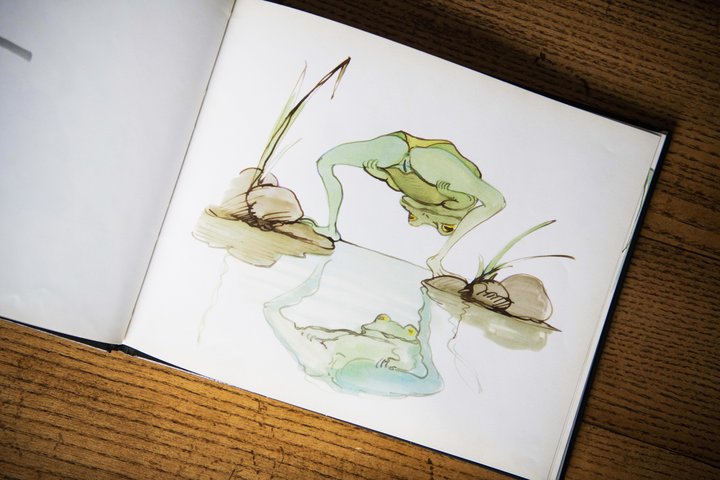
The seed of the idea for the book, Ungerer said, was planted in childhood. His mother, a practical joker, instructed Ungerer to ask a woman working at the grocery store if she had frog legs. “She thought I was talking about her and she nearly slapped me!” he recalled. And thus, an obsession with frog legs was born.
The Joy of Frogs is satire, like most of Ungerer’s erotic achievements. His most well known, the 1969 collection Fornicon, is full of shockingly contemporary line drawings of futuristic sex machines landing somewhere between fantasy and post-capitalist nightmare. A man reclines in pleasure as a tongue-covered wheel revolves against his erection. A newfangled salon heat lamp features a dildo which extends into the wearer’s mouth.
While Fornicon pokes fun at the mechanization of pleasure, Joy mimics how-to guides dictating sex positions as if they were homework assignments. Waterskiing, muff diving, gazing into their crotch’s reflections ― the book’s greatest thrills aren’t in its most obscene moments, but rather those flexing the most whimsy.
“Eroticism is the life of the brain,” Ungerer once said. Sex lives in the imagination as much as the groin.
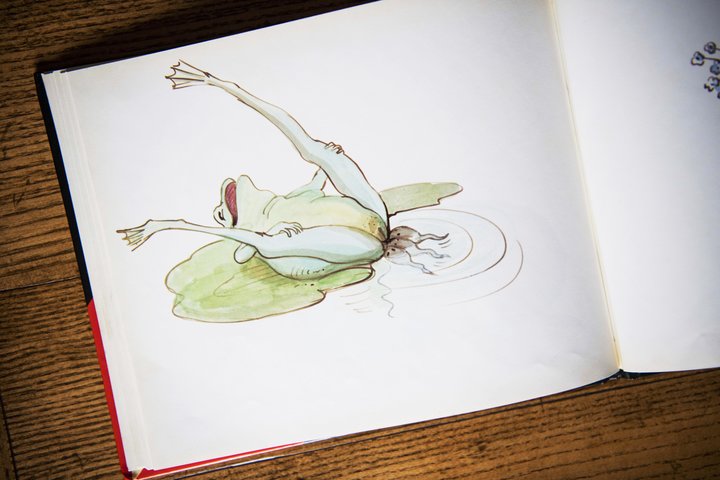
Were the librarians right to be so miffed by Ungerer’s double life? According to the author, he drew a bold enough line between his interests, never intending his erotic materials to land in the hands of kids. There’s no confusing Joy for a child-friendly offering; the cover’s red warning label wards off the under-18 crowd with a loud “For Adults Only.” Maybe it was his Protestant upbringing showing, but he insisted that the thrills of transgression be experienced later in life.
“It comes back to the subject of innocence. You have to wait for the right time for the right subject” Ungerer explained to me. “If a child were to know everything, it would become run of the mill. There would be no discovery. It would be the end of discovery. It would be the end of eroticism! Eroticism is a safari, you know what I mean?”
[ad_2]
Source link

